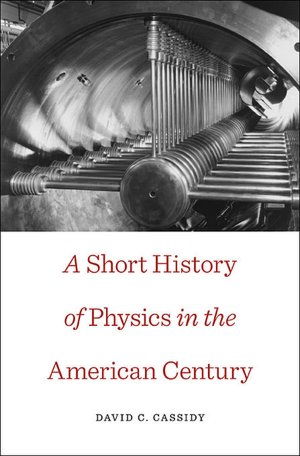A Short History of Physics in the American Century
By David C. Cassidy

“David Cassidy tells a big story in a short book written for anyone interested in the place of science in American society. American physics began to stir at the end of the 19th century and rose to world hegemony by the beginning of World War II. The creation of the atomic bomb, the Cold War, and the consequent lavish support for physics meant that American dominance endured until the last decades of the 20th century. Cassidy stresses the perennial opposition between pure and applied physics, the gigantizing of science dependent on the federal purse, the transition from powerful science administrators to functionaries, globalization, and the relative marginalization of women. His conclusion on the rise of solid-state physics, computing, and the Internet brings this dramatic story to a dramatic close.”
—J. L. Heilbron, author of Galileo
“The real history of America in the twentieth century was shaped by the obscure struggles of physicists: from the electrification of the nation, to the nuclear standoff of the Cold War, to the information revolution, the lives of Americans have been affected in fundamental ways by the achievements of the physics community. Cassidy tells this essential story with brevity and style, filling a major gap in modern historiography.”
—Spencer Weart, AIP Center for History of Physics
—J. L. Heilbron, author of Galileo
“The real history of America in the twentieth century was shaped by the obscure struggles of physicists: from the electrification of the nation, to the nuclear standoff of the Cold War, to the information revolution, the lives of Americans have been affected in fundamental ways by the achievements of the physics community. Cassidy tells this essential story with brevity and style, filling a major gap in modern historiography.”
—Spencer Weart, AIP Center for History of Physics